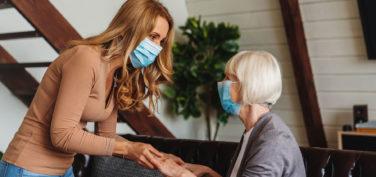COVID-19 has given the world a crash course in virology and vaccines. PPE, N95, mRNA, herd immunity, and emergency use authorizations (EUAs) are now household words. Less attention has focused on how vaccine costs will be managed amidst fast-growing investment and competition in the vaccine marketplace. Value demonstration and access will be more important than ever as we enter what may be a Golden Age of vaccine development.
Consider how the marketplace has changed in just the past 18 months. Before the pandemic, the fastest vaccine development effort was a four-year program for mumps in the 1960s.1 For COVID-19, Pfizer/BioNTech and Moderna pulled off a comparable feat in less than a year. Today, upwards of 15 SARS-CoV-2 vaccines have received EUAs or full authorization globally, and the pandemic has spurred vaccine research across many diseases.2 Moderna alone has nearly two dozen products in the pipeline, including vaccines for Zika, Epstein-Barr, HIV, and cytomegalovirus infections.3
Despite vaccine hesitancy in some quarters, public resistance to vaccination is at an all-time low. Approximately two billion people worldwide have received their COVID shots, including many who were never vaccinated before as adults.4 Chances are they will roll up their sleeves again—not just in the next pandemic, but in any number of future disease-prevention campaigns where vaccines play a role. This is why it’s so important to examine value and access processes and prospects.
The value and access challenge in a vaccine Golden Age should be looked at in three ways. First, in the near term, manufacturers must prepare for a transition in which vaccines distributed under EUAs move to full commercial licensing and launch. Second, and related: manufacturers need to differentiate their vaccines to payers reviewing more such products than ever before. Third, companies must craft equitable distribution strategies—not just under the pressure of pandemics, but for their vaccine portfolios more broadly.
The U.S.: Beyond EUAs
Prior to the pandemic, EUAs were rare and shrouded in ambiguity. The FDA only issued them if the need was urgent and the known benefits outweighed potential risks.5 Consequently, the EUA path was never a primary focus for the industry. Then came COVID-19. According to a tally posted on a Harvard Law School blog, the FDA has issued nearly 400 EUAs for drugs, devices, diagnostics, vaccines, and protective equipment during the pandemic.6 While this torrent creates a precedent, EUAs are unlikely to become the new “normal”—except in the event of future health emergencies.
That said, COVID-19 has changed the operating environment for both regulatory processes as well as for vaccines. And the transition from EUAs to full, commercial approval for COVID vaccines has much to teach us about the newly competitive landscape.
One key change is the growing importance of real-world evidence (RWE) and the need for manufacturers to demonstrate comparative health economic value and savings. Vaccines from Moderna and Pfizer/BioNTech have racked up months of sales from hundreds of millions of shots. Now, in the U.S., vaccine makers are competing just as the payment path may be poised to shift from the government’s Biomedical Advanced Research and Development Authority (BARDA) to public and private insurers.
Unlike any other products approaching commercial launch, COVID-19 vaccines could land in front of Pharmacy and Therapeutics (P&T) committees with extensive dossiers on performance in the real world. Payers have been slow to recognize the value of RWE. But the quality and volume of RWE they see for COVID vaccines and boosters are likely to make an impression.
Formal or informal management practices by payers may also be affected. In the past, in the U.S., if the Advisory Committee on Immunization Practices (ACIP) recommended a vaccine, payers would generally cover it because budgetary impact was minimal given moderate pricing on a relatively small number of adult vaccines. Payers also recognized that effective disease-preventing vaccines were usually the most cost-effective interventions. And, in the case of COVID-19, BARDA was covering most of the cost.
Fast-forward to fall 2021 or winter of next year, and the picture is less certain. We don’t know if BARDA or other government bodies will continue purchasing adult COVID vaccines. With an anticipated increase in vaccine innovation, shots and boosters could draw more scrutiny from payers. Rather than covering seven or eight very similar adult vaccines at parity, payers may choose just one or a few to prefer, formally or informally.
Differentiated Value Communications
What happens when millions of health-plan members seek novel vaccines and COVID-19 booster shots are recommended by health authorities but not covered by BARDA? Manufacturers must show product differentiation as well as flexibility. Maybe large healthcare systems will desire comprehensive portfolio contracts with manufacturers who can meet a variety of vaccine needs.
This might disadvantage smaller vaccine startups—unless they offer a workaround, such as a network of partners that can match the capabilities of larger firms. Companies can also seek partnerships with organizations that can provide assessment of value and market-access potential and evidence generation relevant to both EUA approval and post-EUA commercial launch.
Pandemic Preparedness
COVID-19 is a shared global catastrophe. However, the burden is far heavier in low- and middle-income countries, where it has added a layer of misery and instability. According to the World Health Organization (WHO), 75% of all COVID-19 vaccine doses have been distributed in just 10 countries.7 This is the crisis targeted by COVAX, a globe-spanning vaccine initiative co-led by the Coalition for Epidemic Preparedness Innovations (CEPI), the Global Alliance for Vaccines and Immunizations (GAVI), and WHO.
Acknowledging an ethical responsibility to address inequities, many vaccine makers are working with COVAX. And tools to assess their efforts, including annual rankings from the Access to Medicines Index spur them to try even harder.
Vaccine innovators must think creatively about how to differentiate their products in a competitive environment and go to market effectively. But just as important, the roadmap must specify how all countries will have a chance to share the benefits of successful development and launch programs. Today, and in the next pandemic, the whole world will be watching.
References:
1. Ball P. 2021. “The Lightning-fast Quest for COVID Vaccines — And What it Means for Other Diseases.” [online] Nature. Available at: https://www.nature.com/articles/d41586-020-03626-1. Accessed May 25, 2021.
2. Agrawal G, et al. 2021. “Fast-forward: Will the Speed of COVID-19 Vaccine Development Reset Industry Norms?” [online] McKinsey & Company. Available at: https://www.mckinsey.com/industries/pharmaceuticals-and-medical-products/our-insights/fast-forward-will-the-speed-of-covid-19-vaccine-development-reset-industry-norms. Accessed May 25, 2021.
3. Moderna Pipeline. 2021. [online] Modernatx.com. Available at: https://www.modernatx.com/pipeline. Accessed May 25, 2021.
4. Holder J. 2021. “Tracking Coronavirus Vaccinations Around the World.” [online] NYTimes.com. Available at: https://www.nytimes.com/interactive/2021/world/covid-vaccinations-tracker.html. Accessed May 25, 2021.
5. “What Is Emergency Use Authorization? A Q&A with Joshua Sharfstein, MD.” 2020. [online] Jhsph.edu. Available at: https://www.jhsph.edu/covid-19/articles/what-is-emergency-use-authorization.html. Accessed May 28, 2021.
6. Iwry J. 2021. “From 9/11 to COVID-19: A Brief History of FDA Emergency Use Authorization.” [online] Harvard.edu. Available at: https://blog.petrieflom.law.harvard.edu/2021/01/28/fda-emergency-use-authorization-history. Accessed May 25, 2021.
7. “Step Up Global Plan for COVID-19 Vaccines, UN Chief Says in Message to World Health Assembly.” 2021. [online] News.UN.org. Available at: https://news.un.org/en/story/2021/05/1092592. Accessed May 25, 2021.










